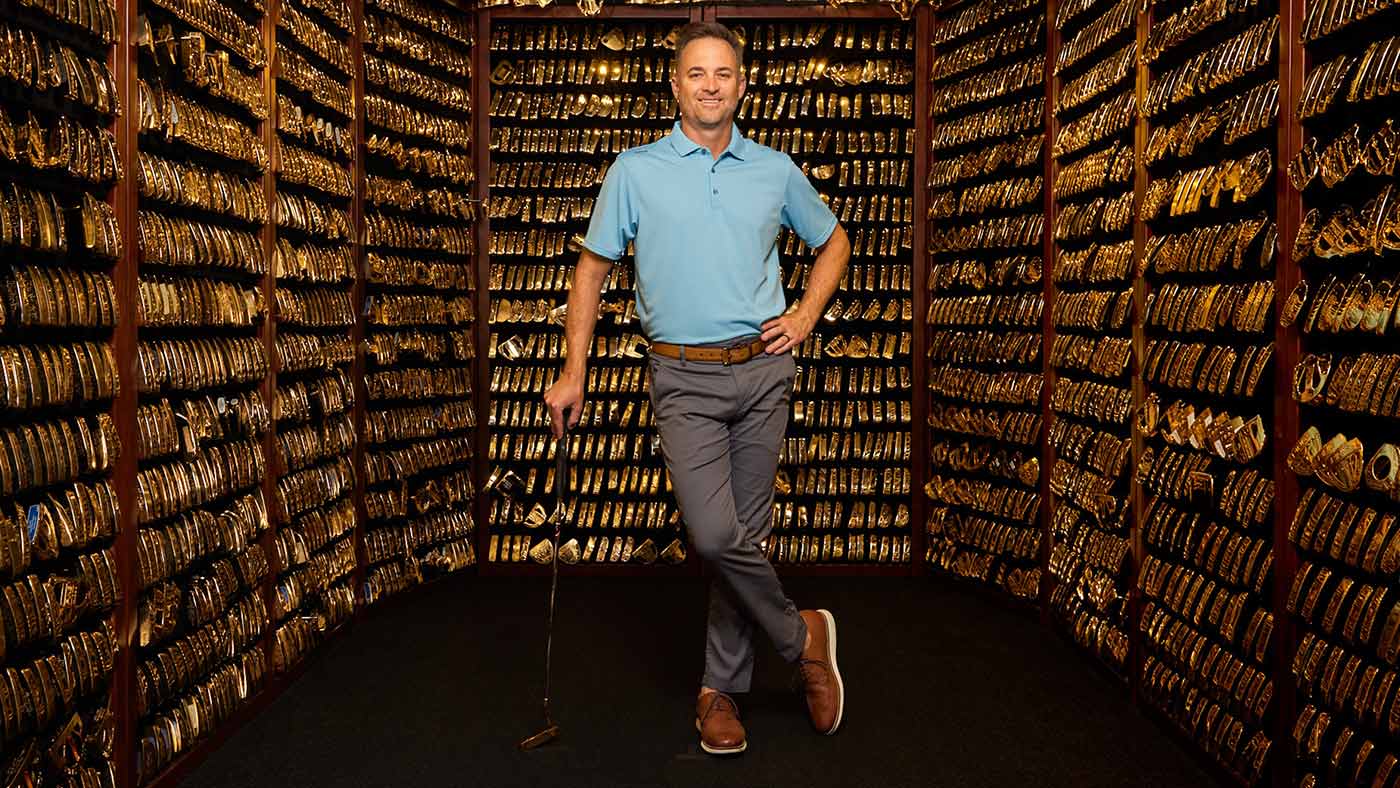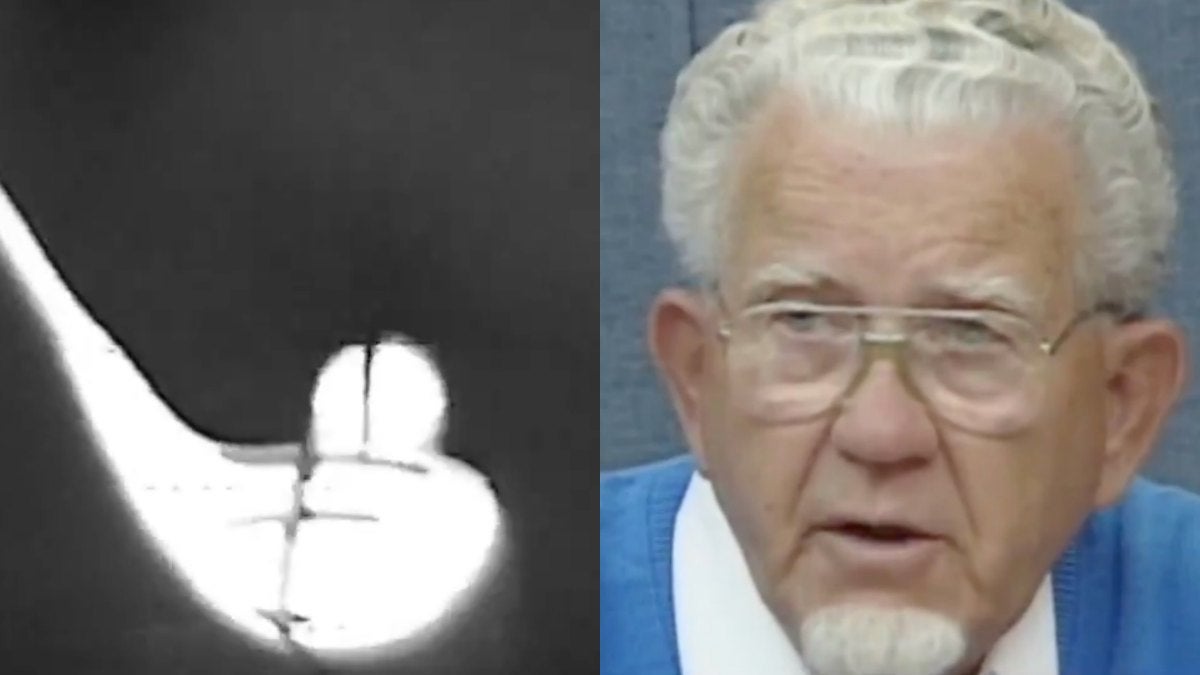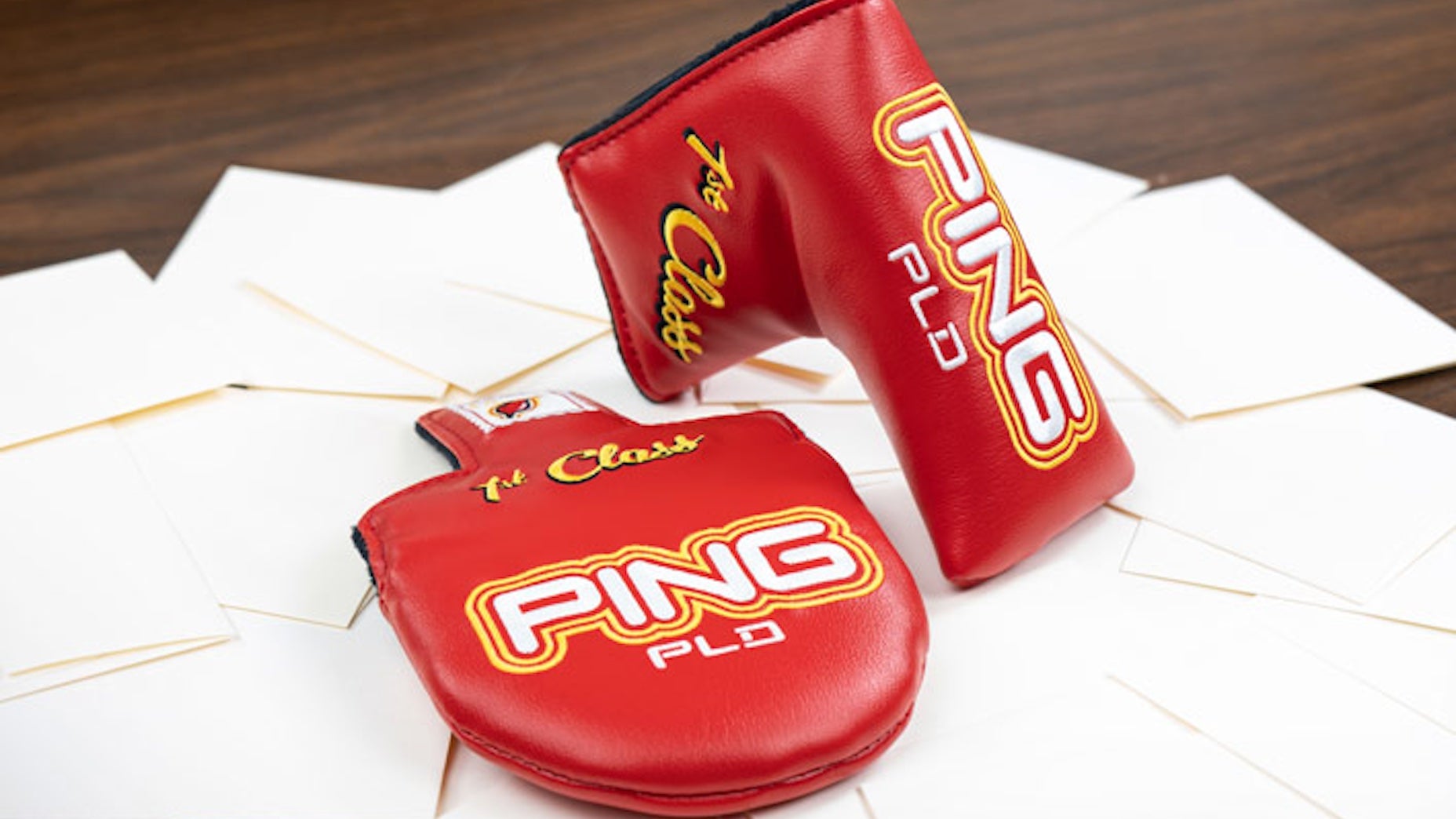Fifty-five years ago, the Ping Anser debuted and changed putters forever
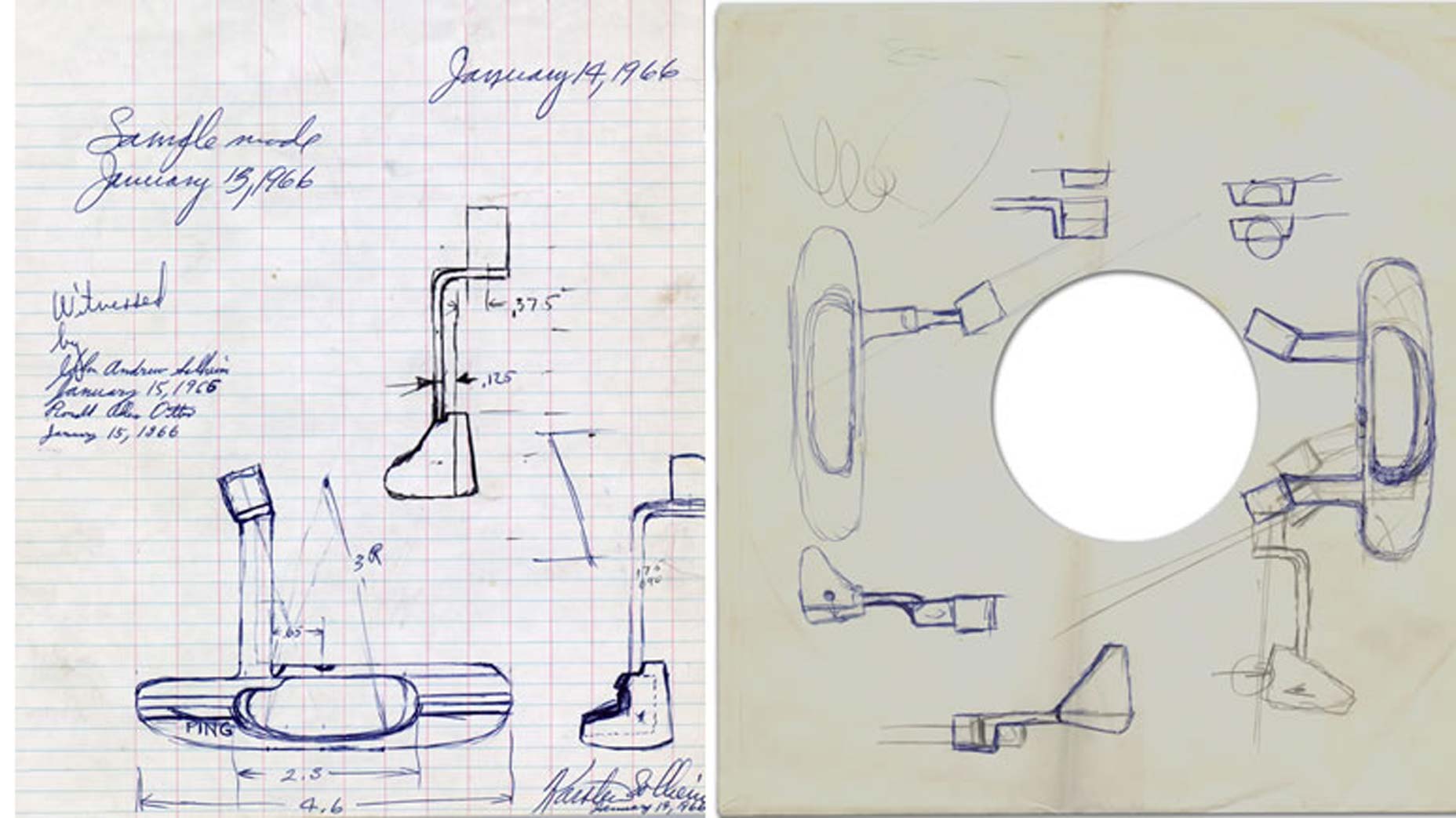
This detailed sketch of the Ping Anser was rendered just days after Karsten Solheim made his original drawing on the sleeve of an old 78 rpm record, in January 1966.
Courtesy of Ping
Though it began on New Year’s Day with a military coup in the Central African Republic, January 1966 proved a pretty good month in human endeavor.
Jerry Garcia and Phil Lesh performed together under the Grateful Dead name for the first time. The campy charms of Batman debuted on television. In tennis, future world No. 1 Stefan Edberg was born in Västervik, Sweden. And in golf, another future world No. 1 of Scandinavian descent appeared on the stage — the Ping Anser putter.

From January 6 to 9, Ping’s founder, the Norwegian émigré Karsten Solheim, attended the season-opening 1966 Los Angeles Open, where the endless sea of standard, simple blade putters — like the one used by Arnold Palmer — rankled him. Solheim, a trained engineer, returned home to his garage workshop in Scottsdale, Ariz., hell-bent on creating something better — an “answer,” though really it was more of a retort.
(Karsten’s wife, Louise, suggested the name, as well as the idea to drop the “w” so Anser would fit on the putter’s toe pad. Karsten was lukewarm on the moniker but couldn’t think of anything better before it had to go to the engraver.)
Almost immediately, Solheim was struck by inspiration and sketched the club’s design on what was at hand—the dust jacket of an old 78 rpm record.
The disc itself has been lost to history.
Given the runaway success to come, however, chart-toppers at the time, like the Beatles’ Rubber Soul or Bob Dylan’s Highway 61 Revisited, would have been appropriate, or, given Solheim’s meditative manner and, later, jazzy tuft of chin hair, maybe John Coltrane’s A Love Supreme.
Like the best of these artists’ work, Solheim’s creation wasn’t just successful:
It was innovative and eventually iconic.
His quickly drawn putter became a quickly cast putter, with a sample built in a day — January 13 — followed by a more detailed drawing on graph paper the following day, dated and double-witnessed per standard company practice. A month later, Solheim introduced his creation to pros at the Phoenix Open. The breakneck pace continued with an Anser ad in the March 4 issue of Golf World and, just two weeks after that, its first PGA Tour win in the hands of Lionel Hebert at the Florida Citrus Open Invitational (where the 1957 PGA champion triumphed by 2 strokes over, among others, Jack Nicklaus). That’s two months from concept to proof of concept via a trophy. Nowadays, it takes that long for marketing departments to schedule a Zoom call.
The Anser didn’t tweak the blades of the day. It reimagined the putter and, in doing so, became the standard. Consider the hosel.
Hosels are usually about as sexy as the connective tissue they are, uniting clubhead and shaft. Only after the dreaded hosel rocket do they invade our thoughts.
Unless, that is, you think like an engineer, like Solheim, who saw the hosel differently — something that obstructed a golfer’s view of the clubface. His radical offset hosel gave golfers a clear field of vision.
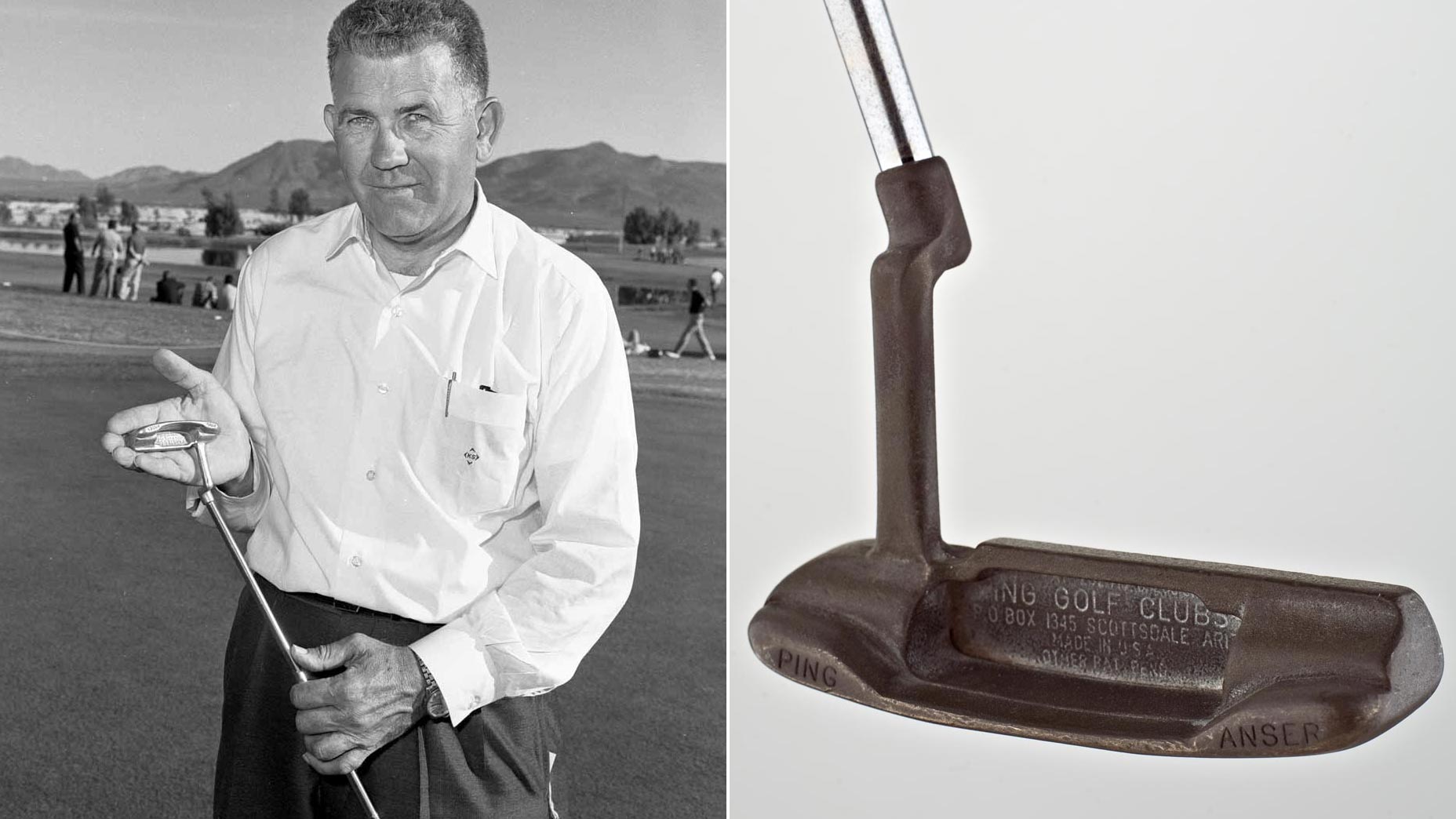
Solheim’s own fresh perspective didn’t end there. Lines running parallel to the clubface helped players align the putter squarely. The Anser’s cavity-back head also lowered the center of gravity and pushed weight to the heel and toe for added stability — like the wheel, something we now take for granted and wonder how it was possible no one had already figured out.
There were no patent offices around when the wheel took shape. Solheim wisely applied for patent protection on May 16, 1966, and the Anser, er, answer came back from examiners Messrs. Edwin H. Hunter and Melvin Feifer on March 21, 1967, in the affirmative: design patent 207,227, with a term of 14 years. At which point, putter makers turned over a big hourglass and set to waiting.
If imitation is indeed the sincerest form of flattery, by now a Ping Anser clubhead would be bigger than a driver’s, swelled by all the doppelgängers that have swam in its wake since its patent expired in 1981. Like “Band-Aid,” “Kleenex” and “Frisbee,” the Anser became genericized—a type of putter.
The Ping Anser has won more than 500 Tour events and 19 men’s major championships since its debut (plus nine majors from the Anser 2 sequel and another from the Anser 4). Throw in “Anser-style” putters from companies A to Z since ’81 and the victories rocket well into four figures.
The Anser has come a long way since its earliest days, when Karsten’s sons John and Allan were machining and grinding the raw castings and Dad was filing and sandpapering their radiuses by hand.
“My dad was always working on new things,” recalls John Solheim, “but this one had such clean lines to it.”
Among the many other aficionados likewise smitten: Scotty Cameron, who would go on to become one of golf ‘s preeminent putter designers.
“The Anser putter is as iconic today as it was more than 55 years ago,” Cameron says. “Its design is timeless and has inspired many putter makers, including me. Karsten Solheim was a true pioneer. He paved the way and gave us an opportunity to carry on the torch that he created.”
The Anser’s importance to Ping is such that when the club turned 50, the company brought out a limited edition of the putter that was essentially the product of a time machine. It used the original molds and cast the heads with the original tools at the original foundry in Richmond, Calif. True Temper supplied the original model shaft, Golf Pride molded the original grip and 3M again supplied the grip tape. John Solheim went so far as to hand-grind each putter, just as he’d done a half century earlier in the family 45 garage. More than 1,500 of these commemorative putters were made. Our hands hurt just thinking about it.
At 55 years old, some things change — a few even for the better. (Sure, the wrinkles multiply, but we’re eligible for discounts at national parks.) For a design patent, 55 is just a number. For Ping, it’s cause for celebration and a chance to issue another limited-edition putter — this one called the Anser 55 Patent. For the rest of us? It’s reason to reflect on the club’s enduring impact.
The Beatles, Dylan, Coltrane: Their work remains relevant — essential — despite the rise of hip-hop, trance, techno and so on. Sure, there are dozens of mallets and mid-mallets and even some retro blades fiercely fighting for market share, so the Anser and its heel-toe weighted offspring no longer dominate to the extent they used to. Ping itself now has five different “families” in its putter lineup, each with multiple different models (all including an Anser or variation, such as Anser 2 or Anser 4) — different strokes for different folks. But Ansers continue to be hugely pertinent putters, and no doubt will be 55 years from now and beyond, just like people will still be listening to “Norwegian Wood.” Isn’t it good?

